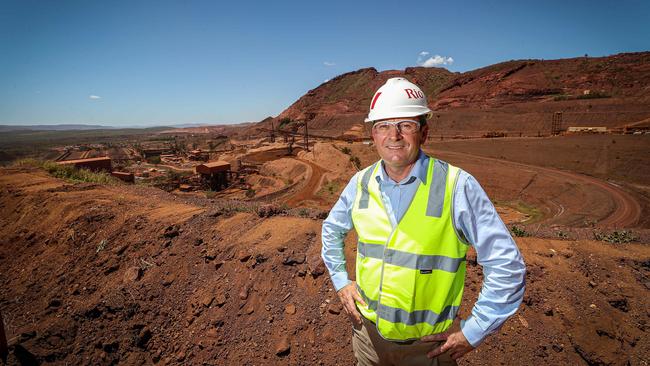For the economy, why we need to get back to work
On the numbers, we’ve got an odd combination – a rising number of people in jobs and a big surge in people looking for a job.

Business
Don't miss out on the headlines from Business. Followed categories will be added to My News.
The latest Roy Morgan jobless numbers show that nearly two million Australians are still out of a job as we count down to the end of JobKeeper at the end of the month.
JobKeeper is supporting around one million people in jobs: when it ends will they all join those two million in the dole queue?
The Morgan figures are for February. They showed 1.93m Australians were jobless - a leap of an extraordinary, and on the surface disturbing, 250,000 on January.
At the same time, they also showed just over 12.7m Australians had jobs – up 28,000 on January and the highest level since early March last year, before the national lockdown started, sending the economy plunging deep into recession and the jobless numbers soaring.
On the numbers, we’ve got a rather odd combination – a rising number of people in jobs and a big surge in people looking for a job.
It’s not driven by, as it might have been in the past, massive immigration numbers, but simply, more people wanting a job.
That seems to me to be actually good news: that more people either out of work or not choosing to work now think it’s actually worth bothering to look for a job, in contrast to most of last year.
Yes, it could also indicate more people having to look for work as they and/or their families came under financial pressure.
Whatever, what we call the workforce – those in work and those looking for work – has leapt to its highest level ever, at 14.6m, on the Morgan figures.
It also meant that in addition to the 1.93m jobless Australians, another 1.14m Australians were underemployed – in a job but wanting to work longer hours. So in total over 3m Australians were unemployed or underemployed.
As I’ve been explaining over the past year, these Roy Morgan numbers are clearly a more accurate indicator of what’s been happening to jobs than the official Australian Bureau of Statistics numbers.
They are also far more timely. These latest Morgan numbers are for February. We won’t get the ABS numbers for February for another two weeks; and even then they will only cover the first two weeks of the month.
The most current ABS numbers are telling us that only 877,000 were jobless in – to stress, the first two weeks of – January, to give a jobless rate of 6.4 per cent (Morgan’s, for February, is 13.2 per cent) or just 1.1 per cent higher than in January 2020, before the lockdowns and the recession.
If anyone thinks that only 6.4 per cent of the workforce is really unemployed, I have a bridge in Sydney to sell them, cheap; indeed I’ll throw one in Melbourne in for free.
The GDP figures during the week showed that as far as the overall national economy is concerned we had recovered almost all the ground lost in last June quarter’s devastating lockdown plunge.
Back then the economy shrank by a completely unprecedented 7 per cent, as it was – quite literally – ordered into recession by government; all nine governments, the federal and the eight state and territory governments.
Over the September and December quarter we made back most of that plunge, to finish the year just 1.1 percent below where we had been a year before.
Continuing growth in the March quarter will have made up that gap. Now where we go is all down to what happens when JobKeeper ends – and how quickly and how effectively the vaccine is rolled out.
Arguably the biggest problem, we face through 2021 is the conflict between the ‘national interest’ and the – political – interests of individual state governments.
One of the biggest ‘lessons’ of 2020 is that there’s no political pain in over-reacting to the virus and putting supposed state interest – actually, the interests of the party in power - ahead of the national interest.
The most striking example is WA and its premier Mark McGowan. It’s essentially closed itself off from the rest of Australia and the Government is polling at 68 percent and headed for a crushing re-election victory.
What we need to get a sustainable national economic recovery – and jobs for those two million Australians - is an absolute commitment by all state governments that they won’t initiate snap lockdowns and border closures.
Good luck on that.
More broadly, though, we did navigate both the virus and the economic turmoil through 2020 better than most if indeed not - almost - everyone else.
Not many and certainly not the countries we most like to be compared with finished 2020 essentially back to where they had started and had so few deaths.
The one stand-out exception is, wait for it, China – which started it all.
Over the year China managed 6 per cent growth – at least on its official ‘statistics’. It also now ranks 82nd in the world on, again, ’official’ virus deaths.
Go figure. And/or believe.
Originally published as For the economy, why we need to get back to work



